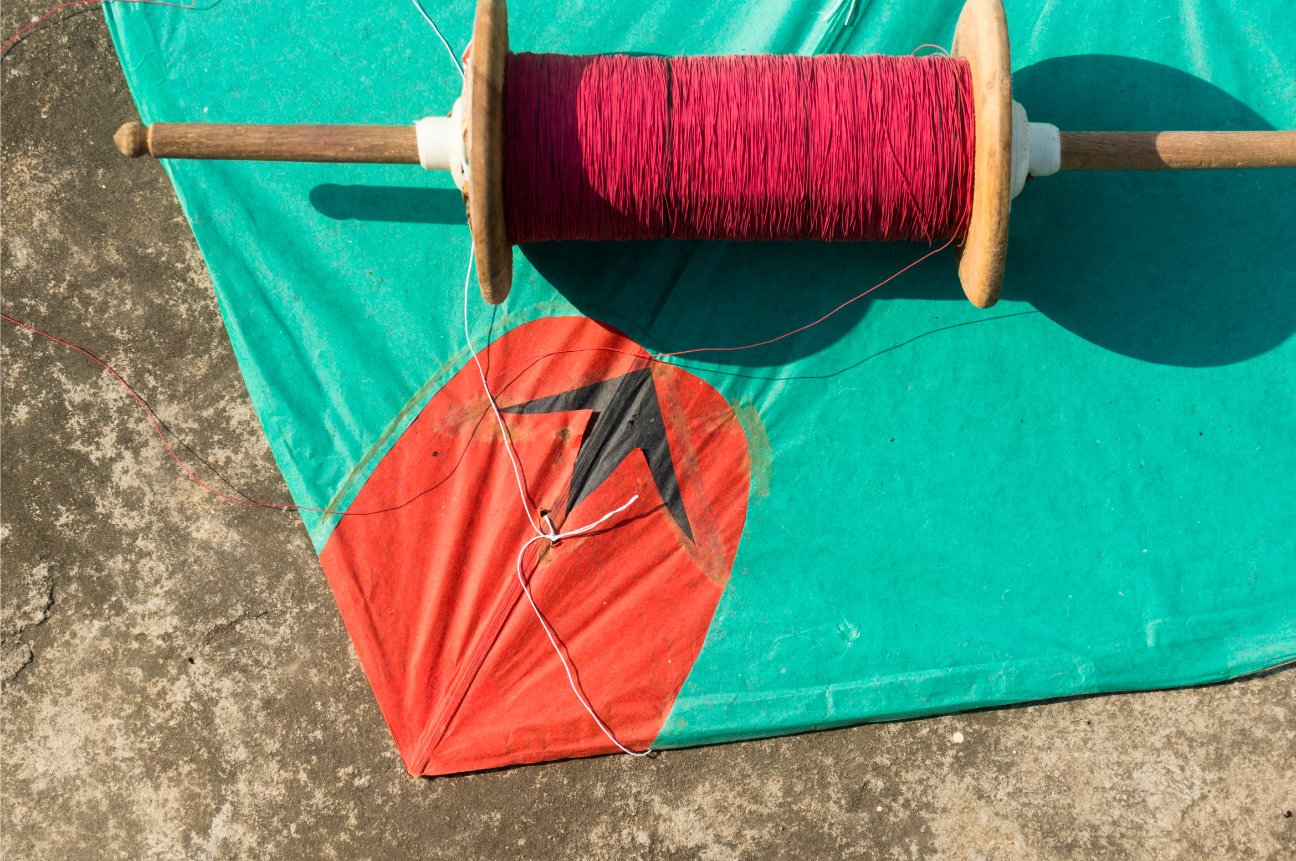Unlike the traditional cotton-based manjha, Chinese manjha is strong enough to cut through flesh. Here’s how this killer thread threatens both lives and the environment!
Kite-flying makes for special memories – friendships are sealed and rivalries born. The festival of Makara Sankranti, in India, is particularly synonymous with kite flying and its massive events attended by people from all over the world. However, this colourful time meant to celebrate peace and prosperity, unfortunately, has turned into a time of suffering and death for wildlife around the country due to the use of ‘Chinese manjha’.

Image courtesy: shutterstock_565523206
Chinese manjha is the term for non-biodegradable synthetic threads, often coated with powdered glass or fine pieces of metal, used by kite flyers across the country to cut opponents’ kites. Glass-coated manhja is not a new concept. Traditionally, manjha was made using cotton thread covered in a mixture of tree gum, rice paste and glass. Unlike the traditional cotton-based manjha, Chinese manjha is strong enough to cut through flesh when tense. Although the name suggests the manjha’s international origins, much of the Chinese manjha found in the markets is made in India itself
How Does This Killer Thread Threaten Lives?
On a spool by its own, on a shelf in a cupboard, the manjha is pretty harmless. It’s when it’s put to its intended use that the problems start. Cut kites often get stuck in trees with the strings still attached. While the paper and bamboo parts of the kites may disintegrate – the non-biodegradable, Chinese manjha, remains intact. Birds and small mammals can, and do, get entangled in this thread. As they struggle, they get more entwined, and the manjha starts cutting into their flesh, growing tauter; this can lead to the amputation of limbs and even beheading in some cases.
Another threat they pose is that of electrocution. The manjha can get wet due to rain and conduct electricity when it comes into contact with electrical poles. Birds, animals, and even children chasing kites run the risk of being electrocuted.
It’s not just the cut kites that pose a problem; Chinese manjha that has been disposed of responsibly in a bin can create issues too as birds that scavenge on garbage heaps can get entangled in it. The only way to get rid of the manjha is through burning – which poses as an entirely different environmental issue altogether.
Every year, fire departments and NGOs across the country report calls to rescue birds entangled in this manjha. Most of these birds sport injuries on their wings and limbs. Species like crows, mynahs, kites and barn owls are commonly reported to be caught in manjha. Officials in Bengaluru state that they receive calls to rescue around 45 birds a day and 80 percent of their injuries are due to Chinese manjha.
There have been cases where humans too have lost their lives due to Chinese manjha. Reports from Pune, Delhi and Jaipur show just how deadly it can be as unsuspecting bikers and children are entangled in it.
The Ban:
Effective campaigning by various NGOs and individuals led to the ban of Chinese manjha in Gujarat in 2009. Other states like Maharashtra, Andhra Pradesh, Karnataka and Delhi slowly followed suit. In 2016, the National Green Tribunal imposed a ban on the use of glass coated, nylon and Chinese manjha across the country. However, it is still widely available with manjha sellers providing it clandestinely. Spools of Chinese manjha are also sold as thread for industrial use with disclaimers on it.
Until the demand from kite flyers for Chinese manjha stops, it is likely to be a ban that is nearly impossible to enforce completely.